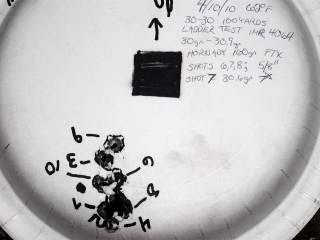Re: OWC test vs. Ladder
<div class="ubbcode-block"><div class="ubbcode-header">Originally Posted By: Dr. Phil</div><div class="ubbcode-body">Jeff,
Your product is quite interesting and can certainly make load development easier.
I have a few questions for you:
- A popular method for doing a ladder test is to perform the test at a distance of 500 - 1,000 yards in order to get better data.
Along with testing at extended ranges, performing the test "Round Robin" style to minimize bias.
(This article written by Jason Baney
http://www.6mmbr.com/laddertest.html does an excellent job of illustrating this concept.)
How is your software able to accommodate this type of testing?
- I would like to have it loaded on both my laptop and desktop.
Does your software license allow the program to be installed on more than one computer in your household?
- If you have already purchased the standard "On Target PC" software, is there an upgrade price? </div></div>
Dr. Phil,
- One of the goals for TDS was to allow OCW testing at closer distances for shooters who don't have easy access to range over 200 - 300 yards. Since the program can locate the bullet holes quite accurately you can get good results at closer distances. At longer distances, 500 - 1000 yards, the targets become quite large and won't fit on a normal scanner. For large targets you can import a picture taken with a digital camera (same as with OnTarget PC) and set the target reference distance. While not as accurate as a scanned image .05" accuracy is easy to achieve.
For the type of ladder test in Mr. Baney's article a single POA is used and multiple shots of each charge weight are fired. To analyze the target in TDS you would follow these steps starting with the lowest charge weight.
1. Create a new group and add the bullet holes for that charge.
2. Define the aim point for the group as the common POA on the target.
3. Repeat steps 1 and 2 for each charge weight in ascending order.
4. When all groups have been defined generate the OCW output. Each group will be measured and plotted in the display.
- Like you, a lot of guys (and gals) have more than one computer and it would be handy to run the program on more than one. I plan to change the license to include an activation for a second computer in the same household.
- I don't have anything in place at this time to handle an upgrade sale. I have TDS listed at an introductory price of $75. If you already own a copy of the OnTarget PC software I'll knock off $15. For now, send an email with your registration number to
[email protected] and we'll get it worked out.
- One more thing. I'm actively working on improvements to TDS and I will be releasing new versions periodically. Eventually I plan to raise the price to $100. However, all future versions of TDS will be available to registered users at no additional charge.
Let me know if you have any other questions.
- Jeff






